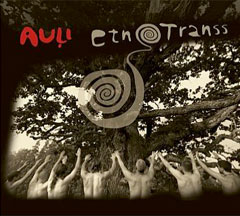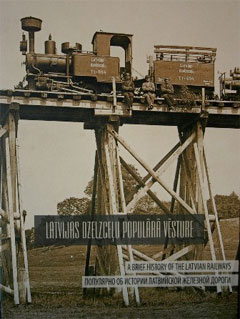In my youth, I had endlessly struggled—and admitted defeat—with the piano. About 10 years ago, a young pianist performed at the New York Latvian Ev.-Lutheran Church in Yonkers as part of the Nov. 18 celebration. After her performance, I remember thinking “Wow! She made that look really easy!” The impressive pianist’s name was Liene Circene.
Last year this same pianist released a solo album of performances, Šūpuļdziesmas, with the charming theme being Latvian lullabies.
Circene, who in 2004 received the Great Music Award for the most impressive debut among Latvian artists, has performed throughout Europe and North America with many orchestras as well as solo.
Šūpuļdziesmas features piano works from many eras, both classic and modern, of many different styles, including folk song arrangements and works that perhaps were not originally composed as lullabies, but whose tenderness certainly allows them to be interpreted as bedtime music.
A number of the songs are arrangements of Latvian folk song lullabies. The listener will have a chance to hear three distinct arrangements of the folk song “Velc, pelīte, saldu miegu” by composers Edgars Raginskis, Pēteris Plakidis and Lūcija Garūta, covering many eras of Latvian music. The young composer Raginskis’s arrangement is particularly striking, as this very simple folk song goes through multiple metamorphoses over the course of the work, starting as the tender melody, then a modern interpretation of it, then even a descent to the very bottom register of the piano.
A number of pieces are by perhaps the best known composer of the Latvian classic era, Jāzeps Vītols, including his “Prelude opus 19 no. 2” and “Prelude opus 20 no. 4.” Other “classic” Latvian composers represented include Jānis Mediņš (the compact disc features two of his “Dainas”—Nos. 3 and 14), as well works by Jānis Ivanovs and Alfrēds Kalniņš.
Diaspora Latvian composers are also represented here, including Tālivaldis Ķeniņš‘s “Bearlude for Alex” and Dace Aperāne’s arrangement of “Netīšām es iegāju.”
One usually might not think of composer Pēteris Vasks’s music as being appropriate for a lullabye, considering the tension and harshness of many of his works. However, Circene’s performance of his “Noktirne” from the cycle “Cikls,” though still exhibiting the melancholy and sadness of many of the composer’s works, brings out the soft and rich melody of the piece. It does not sound out of place at all in the collection.
The album appropriately concludes with the Vītols arrangement of maybe the most beloved Latvian lullabye, “Aijā, žūžū, lāča bērni.” It is perhaps one of the most beautiful performances on this album, a fitting end to a journey through the hours that approach bedtime.
Besides being Circene’s first solo album, this is also the first CD released by the Latvian concert agency Latvijas koncerti. The CD booklet features a biography of and notes by Circene, brief writeups of the featured composers (all in Latvian as well as English), as well as the music ande texts for the folk songs on the record.
One might think a CD made up of only lullabies could be a bit dull, but that is not the case. Both the classic and the modern come together to make a rich tapestry of delicate yet engrossing melodies. Actual lullabies as well as other gentle piano works, performed in Circene’s sensitive and evocative style, make for relaxing and enriching listening. Even though there are different styles and works from multiple eras, Circene’s seemingly effortless ability to extract beautiful performances out of the piano makes for an enjoyable collection of “a little night music.”
Details
Šupuļdziesmas
Liene Circene
Latvijas koncerti, 2009
LK002
Track listing:
Netīšāmi es iegāju, a Latvian folk song arrangement by Dace Aperāne
Velc, pelīte, saldu miegu, a Latvian folk song arrangement by Edgars Raginskis
Bearlude for Alex, by composer Tālivaldis Ķeniņš
Aijā, bērniņ, pūpās, a Latvian folk song arrangement by Jāzeps Vītols
Prelude op. 19 no. 2, by composer Jāzeps Vītols
Prelude op. 20 no. 4, by composer Jāzeps Vītols
Silta, jauka istabiņa, a Latvian folk song arrangement by Lūcija Garūta
Arieta, by composer Ādolfs Skulte
Aijā, Ancīt, a Latvian folk song arrangement by Edgars Raginskis
Circenīša Ziemassvētki, an arrangement by Edgars Raginskis on a theme by Raimonds Pauls
Čuči, mana līgaviņa, a Latvian folk song arrangement by Jāzeps Vītols
Sestā daina, by composer Jānis Mediņš
Velc, pelīte, saldu miegu, a Latvian folk song arrangement by Pēteris Plakidis
Šūpuļdziesma, by composer Jāzeps Vītols
Nocturne from the cycle “Cikls” by composer Pēteris Vasks
Aiz purviem, aiz mežiem saulīte lēca, a Latvian folk song arrangement by Lūcija Garūta
Trešā daina, by composer Jānis Mediņš
14. daina, by composer Jānis Mediņš
Prelude, by composer Jānis Ivanovs
Velc, pelīte, saldu miegu, a Latvian folk song arrangement by Lūcija Garūta
Naktī, by composer Alfrēds Kalniņš
Atmiņas, by composer Vilnis Salaks
Labu nakti, arranged by Edgars Raginskis on a theme by Arvīds Žilinskis
Aijā, žūžū, lāča bērni, a Latvian folk song arrangement by Jāzeps Vītols
Where to buy
Purchase Šupuļdziesmas from BalticShop.
Note: Latvians Online receives a commission on purchases.
Egils Kaljo is an American-born Latvian from the New York area . Kaljo began listening to Latvian music as soon as he was able to put a record on a record player, and still has old Bellacord 78 rpm records lying around somewhere.






